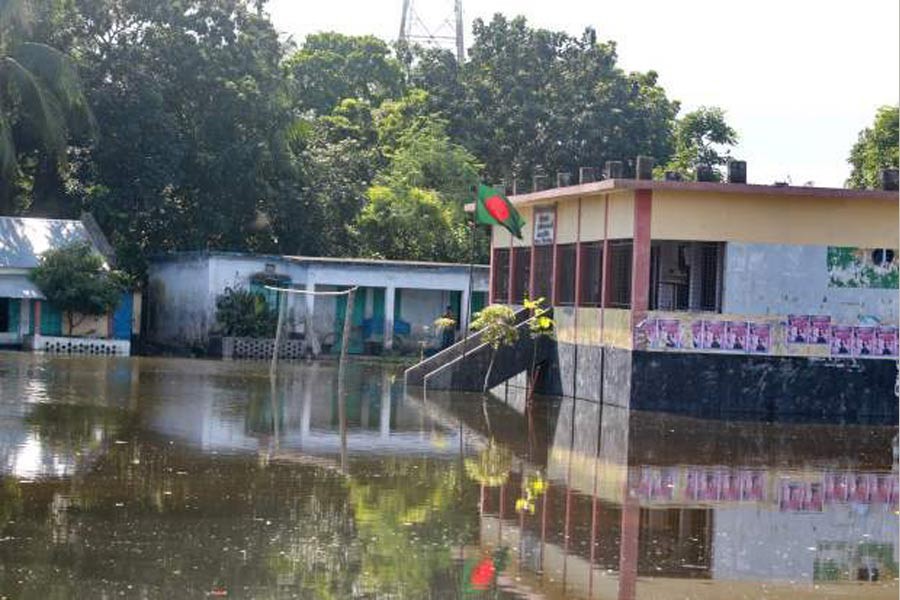Schools in the country's rural areas can barely manage good times. Be it in the area of performance in public examinations or a congenial atmosphere of education, these schools are found invariably star-crossed. Ranging from the rundown look of their appearance to poor attendance at classes to teachers' inadequacy, it is bad news that pervades them. Let us now have a look at the schools still submerged in fetid waters from the recent flood. Students are attending school wading through stagnant water collected in the compound. Classrooms at many schools reek of rotting water hyacinth and periwinkles as well as decaying furniture.
Theoretically, the scene is different altogether. To prove their anxiousness for ensuring a healthier state of education, the authorities concerned are found busy innovating ways complete with fruitful curricula. At the moment they are engaged in presenting students with the long-awaited easier and more topic-focused textbooks. The scene is similar across the country, at schools in the capital or those at district and sub-district levels. The language of a number of books has been made easier, the subjects more 'appropriate'. Many, however, make attempts to raise the issues that appear to have been swept under the carpet, at least for now. In general, bringing stylistic improvement to textbooks appears to be ruling the roost in the scenario of school education --- both primary and secondary.
Ground realities are, however, different. Let us shift our attention to a depressing spectacle. Apart from the failure to offer a tolerably ideal atmosphere to the suffering students, the post-flood Bangladesh rural schools are seen engaged in a desperate struggle for their mere survival. Due to prolonged closure, students first thinned out. Teachers began feeling bored in taking classes with majority of the students absent. In course of time, the handful of students trying to cling to their institutions also stop coming. The trend eventually becomes merged with the scourge of drop-out. Students made to feel discouraged from attending classes due to atmospheric and structural adversities are found in plenty in the aftermaths of natural disasters in this country. This year's repeated occurrences of severe flooding have hit the rural education scenario badly. Perennially an area out of mainstream socio-economic activities, education remains a less focused sector.
The rural spectacle is different from that encountered in the cities and towns. As education is a potent force driving the child and teenage students' proper growth, all the facets of it are taken into account at different phases in the urban areas. Thus carrying out brush-ups in the content and form of books as well as improving teaching methods turn out to be essential exercises.
It does not imply that the necessity of textbook refinements is downplayed in the village schools. Being part of a national set-up, rural students' need for reformed books is similar to that of a city. The difference stems from the fact that for rural schools the mundane existence normally outweighs the satisfaction from neatly edited textbooks.
In our villages, school buildings in good shape warrant more urgency than that attached to education tools. The vulnerable village schools can hardly manage time to bring into focus the matters of curricular appeal. For them, ensuring structural survival traditionally remains the major priority. Schools prone to damages in floods or storms thus bring to the fore, as an unavoidable responsibility, the necessity to keep them out of the reach of disasters.


